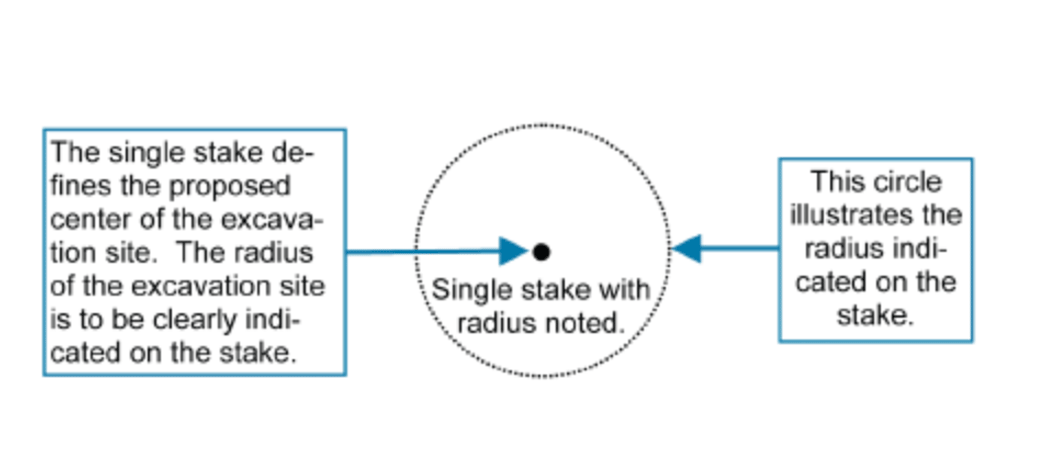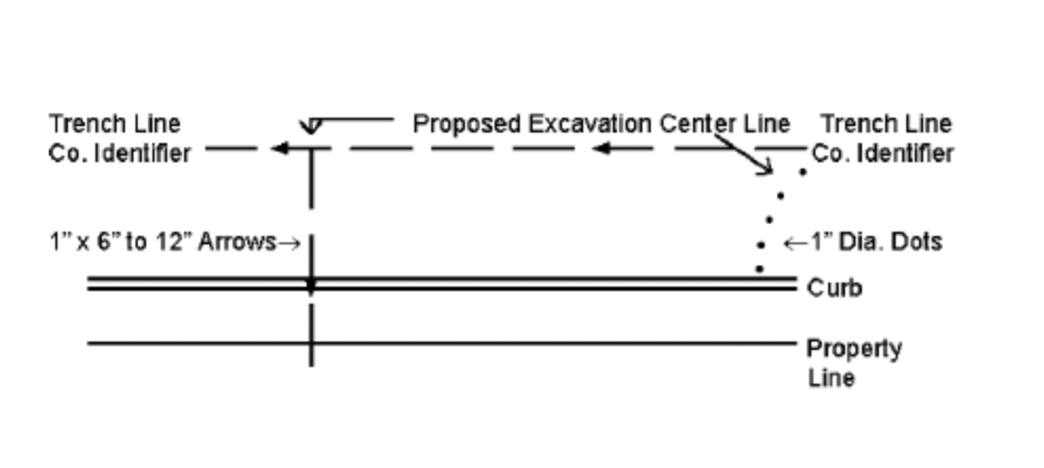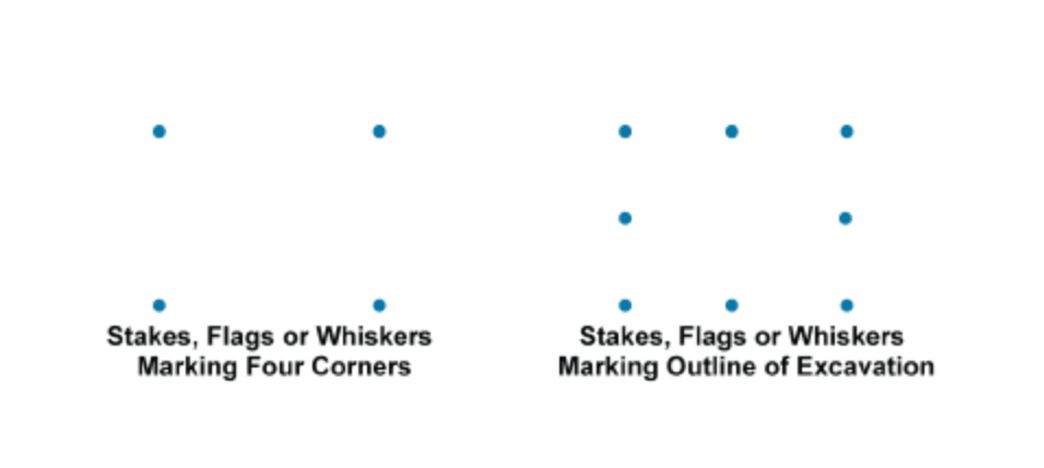Guidelines for Excavation Delineation
BEST PRACTICES CHAPTER 5 - EXCAVATION
Practice Statement 5-2:67/79/
Delineate Area of proposed Excavation: The excavator delineates the area of proposed excavation by one or a combination of the following methods: Electronic white lining (where available through the 811 center); On-site pre-marking, also known as white lining, with white paint, flags, stakes, whiskers and/or other locally accepted methods ; Clear description of the proposed excavation site on the locate ticket.
The following marking illustrations are examples of how excavators may choose to mark their area of proposed excavation. The use of white marking products (e.g., paint, flags, stakes, whiskers, or a combination of these) may be used to identify the excavation site.9
Single Point Excavations Markings

Delineate in white paint the proposed area of excavation using a continuous line, dots marking the radius or arcs, dashes marking the four corners of the project, or dashes outlining the excavation project. Limit the size of each dash to approximately 6 in. to 12 in. long and 1 in. wide with interval spacing approximately 4 ft to 50 ft apart. Reduce the separation of excavation marks to a length that can reasonably be seen by the operator’s locators when the terrain at an excavation site warrants. Dots of approximately 1 in. diameter typically are used to define arcs or radii and may be placed at closer intervals in lieu of dashes.
Single Stake Marking Center Point of Excavation Site

When an excavation site is contained within a 50 ft maximum radius or less, it can be delineated with a single stake that is positioned at the proposed center of the excavation. If the excavator chooses this type of delineation, they must convey that they have delineated the excavation site with a single stake at the center of the excavation and include the radius of the site in the notification to the 811 center. This single stake is white in color and displays the excavator’s company identifier (name, abbreviations, or initials) and the radius of the excavation site in black letters on the stake or with a notice attached to the stake.
Trenching, Boring, or Other Continuous-Type Excavations

Continuous Excavation Marking
Mark in white paint the proposed centerline of planned excavation using 6 in. to 12 in. × 1 in. arrows approximately 4 ft to 50 ft apart to show direction of excavation. Reduce the separation of excavation marks to a length that can reasonably be seen by the operator’s locators when the terrain at an excavation site warrants. Mark lateral excavations with occasional arrows showing excavation direction from centerline with marks at curb or property line if crossed. Dots may be used for curves and closer interval marking.
Stake, Flag, or Whisker Excavation Markers

Delineate the proposed area of excavation using stakes, flags, or whiskers instead of spray paint to mark radius or arcs; the four corners of the project; or when outlining the excavation project. Limit the interval spacing to approximately 4 ft to 50 ft. Reduce the separation of excavation marks to a length that can reasonably be seen by the operator’s locators when the terrain at an excavation site warrants. Stakes, flags, or whiskers provided to illustrate arcs or radii may be placed at closer intervals to define the arc or radius. Stakes, flags, or whiskers are white in color and display the excavator’s company identifier (name, abbreviations, or initials).